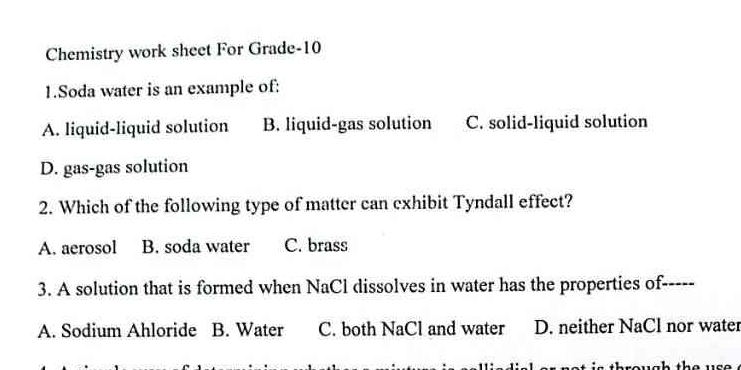1. Soda water is an example of: A. liquid-liquid solution B. liquid-gas solution C. solid-liquid solution D. gas-gas solution 2. Which of the following type of matter can exhibit T... 1. Soda water is an example of: A. liquid-liquid solution B. liquid-gas solution C. solid-liquid solution D. gas-gas solution 2. Which of the following type of matter can exhibit Tyndall effect? A. aerosol B. soda water C. brass 3. A solution that is formed when NaCl dissolves in water has the properties of---- A. Sodium Chloride B. Water C. both NaCl and water D. neither NaCl nor water

Understand the Problem
The questions are related to chemistry concepts, specifically the types of solutions and the properties of mixtures and solutions. They test the understanding of definitions and characteristics of different states of matter and their interactions.
Answer
1. Liquid-gas solution 2. Aerosol 3. Both NaCl and water
- Soda water is an example of a liquid-gas solution. 2. Aerosol can exhibit the Tyndall effect. 3. A solution of NaCl in water has the properties of both NaCl and water.
Answer for screen readers
- Soda water is an example of a liquid-gas solution. 2. Aerosol can exhibit the Tyndall effect. 3. A solution of NaCl in water has the properties of both NaCl and water.
More Information
Soda water is carbonated by dissolving carbon dioxide gas in water, forming a liquid-gas solution. The Tyndall effect is seen in colloidal systems like aerosols where light is scattered by particles. NaCl dissolved in water results in a solution with properties from both solute and solvent.
Tips
Make sure to distinguish between solutions and colloids when considering the Tyndall effect.
Sources
AI-generated content may contain errors. Please verify critical information